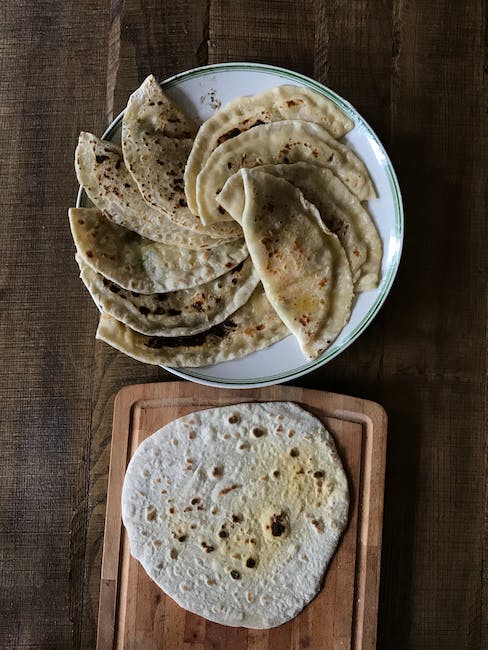Clarified Butter vs Ghee: Unveiling the Differences and Benefits
When it comes to enhancing the flavor of our favorite dishes, the choice of cooking fat can make all the difference. Two traditional fats that have stood the test of time are clarified butter and ghee. While they share similarities, their unique characteristics set them apart in the culinary world. In this comprehensive guide, we’ll delve into the nuances between clarified butter and ghee, answering your burning questions and helping you make an informed decision for your cooking needs.
Introduction: The Battle of Buttery Delights
Are you torn between using clarified butter and ghee in your recipes? You’re not alone. Both are staples in various cuisines, revered for their rich, nutty flavors and high smoke points. But what sets them apart, and how can you use each to elevate your culinary creations? This post promises to unravel the mysteries of these golden fats, providing you with the knowledge to choose the right one for your dish. Let’s embark on a flavorful journey to discover the essence of clarified butter and ghee.
What is Clarified Butter?
Understanding the Basics
Clarified butter is essentially butter that has been melted and cooked until the water evaporates and the milk solids separate. This process yields a pure butterfat that’s free of water and milk solids, resulting in a clear, golden liquid that can withstand higher cooking temperatures without burning.
The Making of Clarified Butter
To make clarified butter, one must gently melt unsalted butter and allow it to simmer. The milk solids will begin to foam and eventually settle at the bottom, while the water content evaporates. The remaining golden liquid is then carefully strained to remove any remaining solids, leaving behind a pure, translucent fat that’s ready for culinary use.
What is Ghee?
Ghee: A Staple in Traditional Cooking
Ghee is a type of clarified butter that originates from the Indian subcontinent. It’s made by simmering butter for a longer period, which not only removes water and milk solids but also allows the butter to cook further, developing a deeper, nuttier flavor and a slightly darker color.
The Cultural Significance of Ghee
In many cultures, ghee is more than just a cooking ingredient; it’s a revered substance used in religious ceremonies and traditional medicine. Its rich flavor and health benefits have made it a cherished component in various dishes, from savory curries to sweet desserts.
Clarified Butter vs Ghee: The Differences
The Production Process
- Clarified Butter: Shorter simmering time, less caramelization of milk solids.
- Ghee: Longer cooking time, which caramelizes the milk solids before they are removed, imparting a distinct flavor.
Flavor and Aroma
- Clarified Butter: Subtle, buttery taste.
- Ghee: More pronounced, nutty flavor and aroma due to caramelization.
Smoke Point
- Clarified Butter: High smoke point around 450°F (232°C).
- Ghee: Even higher smoke point, up to 485°F (252°C), making it ideal for high-heat cooking.
Shelf Life
- Clarified Butter: Good shelf life, but may require refrigeration.
- Ghee: Exceptional shelf life, can be stored at room temperature for extended periods.
Nutritional Profile
- Clarified Butter: Rich in fat-soluble vitamins A, E, and K.
- Ghee: Contains the same vitamins but may have higher concentrations due to the reduction process.
Health Benefits and Considerations
Lactose and Casein Content
Both clarified butter and ghee have reduced levels of lactose and casein compared to regular butter, making them potentially more suitable for those with sensitivities. However, ghee is often considered more digestible due to its longer cooking process, which further breaks down these components.
Heart Health and Fatty Acids
While both fats are high in saturated fats, they also contain beneficial fatty acids like conjugated linoleic acid (CLA) and butyrate, which have been linked to positive health effects, including potential anti-inflammatory properties and improved gut health.
Culinary Uses: How to Cook with Clarified Butter and Ghee
Versatility in the Kitchen
- Clarified Butter: Ideal for sautéing, frying, and as a base for sauces.
- Ghee: Perfect for high-heat cooking, baking, or simply spreading on bread.
Enhancing Flavors
Both clarified butter and ghee can enhance the flavors of spices and herbs when used in cooking. They are excellent mediums for creating rich, layered dishes that require a stable fat that won’t overpower delicate ingredients.
Conclusion: Choosing the Right Fat for Your Dish
In the battle of clarified butter vs ghee, there is no clear winner. Each brings its own unique qualities to the table, from subtle differences in flavor to variations in smoke point and shelf life. Whether you opt for the milder taste of clarified butter or the robust aroma of ghee, both will undoubtedly add a touch of gourmet to your cooking. By understanding their distinctions and benefits, you can make an informed choice that complements your culinary style and dietary preferences. So go ahead, experiment with these golden fats, and watch as they transform your dishes into mouthwatering masterpieces.


